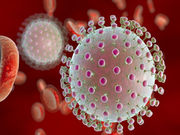Acute Zika virus should be suspected in children who traveled to affected area, have symptoms
MONDAY, Feb. 22, 2016 (HealthDay News) — New guidelines have been developed for evaluation and testing of infants and children with possible Zika virus infection. The interim guidelines were published in the Feb. 19 early-release issue of the U.S. Centers for Disease Control and Prevention’s Morbidity and Mortality Weekly Report.
Katherine E. Fleming-Dutra, M.D., from the CDC in Atlanta, and colleagues updated interim guidelines for U.S. health care providers caring for infants with possible congenital Zika virus infection and for children with suspected infection.
The researchers note that acute Zika virus should be suspected in an infant or child aged younger than 18 years who traveled to or resided in an affected area within the past two weeks and presents with two or more of the following manifestations: fever, rash, conjunctivitis, and/or arthralgia. Maternal-infant transmission is possible during delivery and consequently acute Zika virus should also be suspected in an infant during the first two weeks of life whose mother traveled to or resided in an affected area within two weeks of delivery and who has two or more manifestations of disease. Zika virus illness is usually mild in children.
“This update contains a new recommendation for routine care for infants born to mothers who traveled to or resided in areas with Zika virus transmission during pregnancy but did not receive Zika virus testing, when the infant has a normal head circumference, normal prenatal and postnatal ultrasounds (if performed), and normal physical examination,” the authors write. “Health care providers should report suspected cases of Zika virus disease to their local, state, or territorial health departments to arrange testing and so that action can be taken to reduce the risk for local Zika virus transmission.”
Full Text
Copyright © 2016 HealthDay. All rights reserved.








